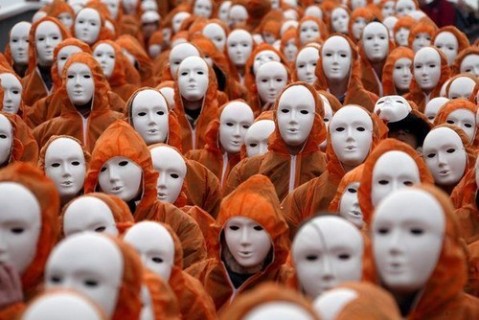Exploring The Architecture of Reality
Soul Retrieval
By Tai Carmen
“For what is a man profited, if he shall gain the whole world, and lose his own soul?” ~ Jesus (Matthew 16:26)
Part I
Our language is rife with references to what has traditionally been
described by shamanic cultures as ‘soul loss’ — “Nobody’s home,” we
might say of an empty-eyed co-worker. Or, in a funk ourselves: “I feel
like a part of me is missing.” Popular songs site it casually — I don’t know where my soul is / I don’t know where my home is (Nelly Furtado, “I’m Like A Bird”).Yet, these expressions are so common, we often use them as descriptors without fully investigating their implication.

“Many of us today don’t feel totally whole, don’t feel as if we are all here,” relates Sandra Ingerman in her book Soul Retrieval: Mending the Fragmented Self.
“Few of us live as fully as we could. When we become aware of this, we want to recover the intensity of life, and the intimacy, that we once enjoyed…We want to come home more fully to ourselves and to the people we love.”

Many turn to the shamanic arts for language and methodology which address our collective angst with a soulfulness lacking in modern lexicon.
“The re-emergence in the late twentieth century of shamanism — with its lively and concrete notion of soul — seems to be a response to a very depressing cultural reality,” notes Jungian analyst John Ryan Haule. ”In the past six or seven hundred years we have undergone a consciousness-shift of 180 degrees. Formerly soul was our primary reality. Now we have only a body and a rational ego.
“The material conditions of our lives have improved immeasurably, but we’ve lost the imaginal and transcendent scope that belongs to the reality of soul. In a situation like this, it is often the depressives among us who are the most realistic regarding the impoverishment of our human existence.” (“Depression & Soul-Loss.”)

According to modern writers on the ancient subject, soul loss accounts for depression, anxiety, a sense of alienation, incompleteness and disconnection, a feeling of being “spaced out,” or “sleepwalking” through life. Extreme cases include coma, psychosis, fugue states and dissociative identity disorders.
Interestingly, the concept that a vital aspect of the self flees or retreats during experiences of extreme pain or disturbance is an idea shared by shamanism and psychotherapy alike. Psychotherapy calls it “disassociation,” shamanism calls it “soul loss.” The purpose in both cases is self-protection.

Modern shamanic healers explain that we all lose bits and pieces of our soul, or vital essence, as we go through life.
The cause doesn’t have to be something as monumental as an accident or as extreme as abuse. It can be as simple as a small child’s sensitivity to her parents’ psychic tension or continued arguing. Little by little, parts of ourselves withdraw and become seemingly lost to us.

Rejected elements of the personality are banished from conscious awareness — Jung’s concept of the psyche’s ”Shadow” aspect. This is done unconsciously, to ease the cognitive dissonance of harboring seemingly conflicting or ambiguous feelings; what modern psychology calls “compartmentalization” and repression.
Denied aspects — such as repressed sadness, anger, inner child or libidinous impulses — are effectively exiled. But they do not disappear. They continue to exist “underground,” as it were, in the subterranean caves of the psyche, causing emotional alienation, discomfort and disconnection from self.
The good news is that excavation of these buried aspects — and a renewal of their accompanying vital forces — is always possible, and the focus of psychotherapy and shamanic healing alike.

“An aspect of the infinite soul fleeing under duress is a state everyone has at some point experienced, regardless of terminology or ideology applied,” comments Kelley Harrell in her Huffington Post article, “The New Treatise on Soul Retrieval.”
The most common approach of neo-shamans is to echo the ancient model of shaman-as-guide in the netherworlds of psyche/non-ordinary reality. As pioneering anthropologist Mircea Eliade wrote in his now classic text “Archaic Techniques of Ecstasy”:
“Only the shaman can undertake a cure of this kind. For only he ‘sees’ the spirits and knows how to exorcise them; only he recognizes that the soul has fled, and is able to overtake it, in ecstasy, and return it to its body….Everything that concerns the soul and its adventure, here on earth and in the beyond, is the exclusive province of the shaman.”

However! A fascinating synthesis between psychotherapy and shamanic soul retrieval has been in the works over the past several decades.
“Upon his return from studying with teachers in India, Australia, and South America, shaman Ross Bishop transformed the Soul Retrieval process into a method that could be embraced by the Western mind and heart by making a simple shift in the roles of Shaman and client,” relates psychotherapist, author and soul retrieval practitioner Selena Whittle.
“In this contemporary method of Soul Retrieval, the essential elements of the process are the same. There is a shamanic journey into the inner world where the wounded part of the self is identified, healed and brought back; however, the client does the work and is guided by the Shaman. The client takes the shamanic journey. The client identifies the part of the self that is wounded. The client builds a relationship with that part of the self, heals it, then brings it back for integration.
“The Shaman guides the client every step of the way, helping the client navigate the internal world of the psyche, guiding the client in the potent words or actions that are needed to build the relationship with the fragmented aspect of the self, to heal it and to bring it back. The shamanic journey becomes a shared experience, the Soul Retrieval a shared healing intervention.”

For more information on how to perform these inner excavations yourself Ross Bishop’s “Healing the Shadow” details the process. Both Selena Whittle and Ross Bishop offer in-person and phone-based sessions.
But let me initiate you right here and now into a simple yet profound method, which you can practice in the comfort of your home.
Part II
1. Create your inner sanctum. This could be anything from an ornate temple to a simple spot by a running brook. The important part is that the setting has identifiable features, which can be recreated, and that the space makes you feel empowered, centered, safe and calm. Mentally construct as many details — sights, sounds and smells — as possible. Lie back, get comfortable and spend some time really making your inner sanctuary come to life behind closed eyes. (*The bath, with some low light, candles, calming scents and salts, is an excellent place to do soul work.)





